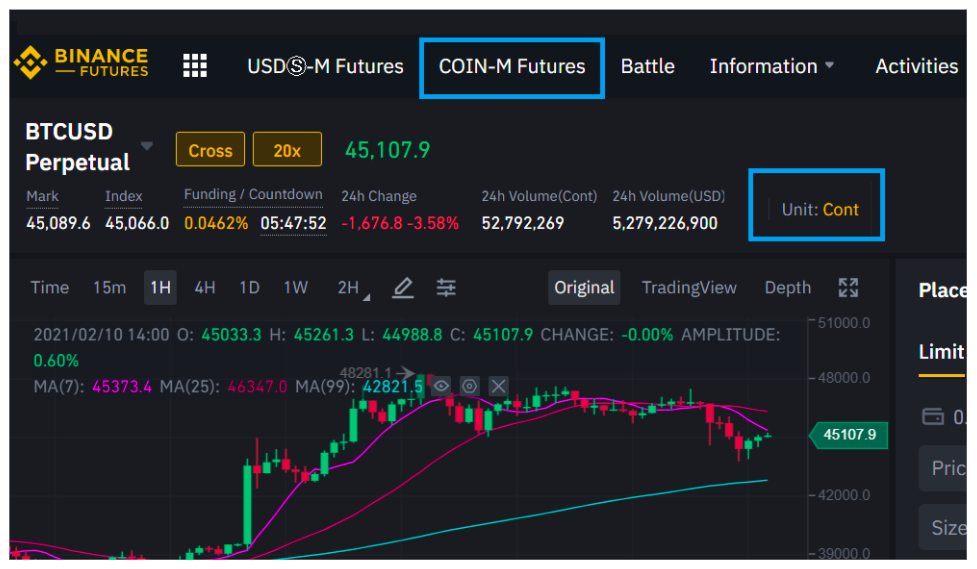
When BitMEX launched its Bitcoin (BTC) perpetual futures market in 2016, it created a new paradigm for cryptocurrency traders. Although this was not the first platform to offer BTC-settled inverse swaps, BitMEX brought usability and liquidity to a broader audience of investors.
BitMEX contracts did not involve fiat or stablecoins and even though the reference price was calculated in USD all profits and losses were paid in BTC.
Fast forward to 2021, and the Tether (USDT) settled contracts have gained relevance. Using USDT-based contracts certainly makes it easier for retail investors to calculate their profit, loss and the required margin required but they also have disadvantages.
Why BTC-settled contracts are for more experienced traders

Binance offers coin-margined (BTC-settled) contracts and in this case, instead of relying on USDT margin, the buyer (long) and the seller (short) are required to deposit BTC as margin.
When trading coin-margined contracts there is no need to use stablecoins. Therefore, it has less collateral (margin) risk. Algorithmic-backed stablecoins have stabilization issues, while the fiat-backed ones run risks of seizures and government controls. Therefore, by exclusively depositing and redeeming BTC, a trader can bypass these risks.
On the negative side, whenever the price of BTC goes down, so does one's collateral in USD terms. This impact happens because the contracts are priced in USD. Whenever a futures position is opened the quantity is always in contract quantity, either 1 contract = 1 USD at Bitmex and Deribit, or 1 contract = 100 USDat Binance, Huobi and OKEx.
This effect is known as non-linear inverse future returns and the buyer incurs more losses when BTC price collapses. The difference grows wider the further the reference price moves down from the initial position.
USDT-settled contracts are riskier but easier to manage
USDT-settled futures contracts are easier to manage because the returns are linear and unaffected by strong BTC price moves. For those willing to short the futures contracts, there is no need to buy BTC at any time, but there are costs involved to keep open positions.
This contract doesn't need an active hedge to protect collateral (margin) exposure, thus it’s a better choice for retail traders.
It is worth noting that carrying long-term positions on any stablecoins has an embedded risk, which increases when third party custody services are used. This is one reason why stakers can obtain over 11% APY on stablecoin deposits.
Whether an investor measures returns in BTC or fiat also plays a massive part in this decision. Arbitrage desks and market makers tend to prefer USDT-settled contracts as their alternative investment is either staking or low-risk cash and carry trades.
On the other hand, cryptocurrency retail investors usually hold BTC or switch into altcoins aiming for higher returns than a fixed APY. Thus, by being the preferred instrument of professional traders, USDT-settled futures are gaining more traction.
author and do not necessarily reflect the views of Cointelegraph. Every investment and trading move involves risk. You should conduct your own research when making a decision.
Title: USDT-settled futures contracts are gaining popularity, here’s why
Sourced From: cointelegraph.com/news/usdt-settled-futures-contracts-are-gaining-popularity-here-s-why
Published Date: Sun, 14 Feb 2021 23:00:00 +0000






